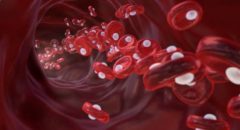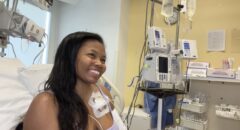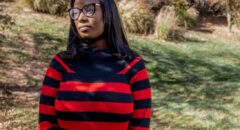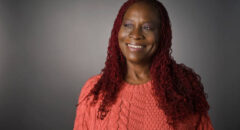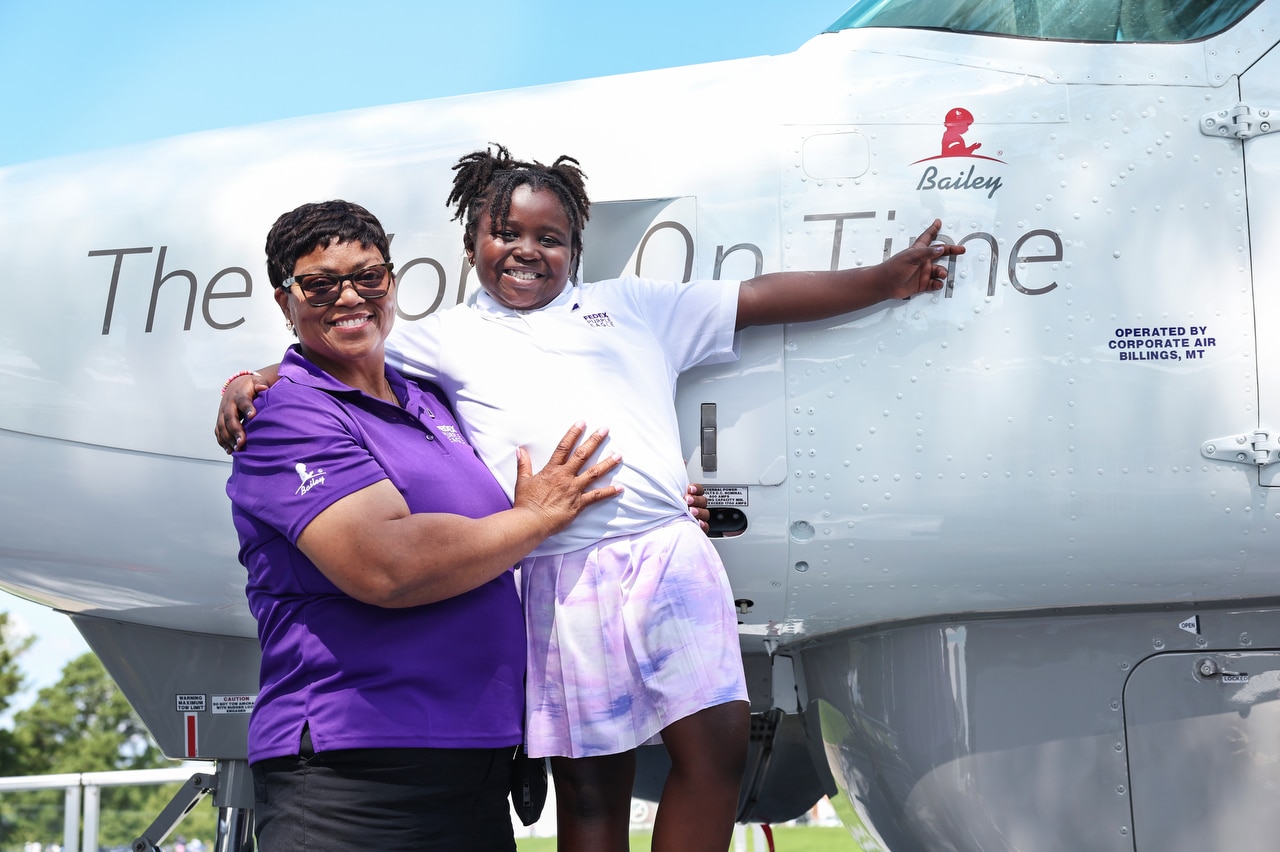
Each August, the world’s top golfers descend on TPC Southwind in Memphis for the FedEx St. Jude Championship—the first stop of the FedEx Cup Playoffs. But this year, one of the most unforgettable names at the tournament isn’t a PGA pro.
It’s Bailey.
The eight-year-old just made history as the tournament’s first-ever Purple Eagle honoree living with sickle cell disease—a milestone that brings new awareness to a condition often overshadowed.
And if you ask Bailey what her Purple Eagle symbol really means?
“It’s the butterfly. People like butterflies. And Sadie likes them too,” she says confidently, referring to her dog.
Bailey’s purple butterfly has become a tournament icon—and a powerful symbol of resilience, joy, and the vibrant spirit she carries with her everywhere she goes.
A Diagnosis That Changed Everything
Bailey’s journey began with fear and uncertainty. Just one week after her birth, she was diagnosed with sickle cell disease—a genetic blood disorder that can cause severe pain, organ damage, and life-threatening complications.
Her parents, Tony and Monica, were devastated. Both are carriers of the sickle cell trait, so they knew the possibility existed. But knowing the risk doesn’t make the reality any easier.
“When we first got the news, of course, it was kind of a hard, hard thing to hear,” Tony recalls. “I walked into the house, and Monica was crying. I thought I had done something wrong.”
Their worries weren’t just emotional—they were practical.
“How are we going to pay for this?” Tony remembers thinking. “I didn’t know what sickle cell was. I didn’t know what this would look like.”
That all changed with a referral to St. Jude Children’s Research Hospital®.
“It was like a breath of fresh air. We were really worried and they did a good job of explaining everything… She didn’t know what was going on, but as she grew and got older, it was no big deal. She actually enjoyed going there. She wouldn’t be feeling good, but she enjoyed going,” Tony says.
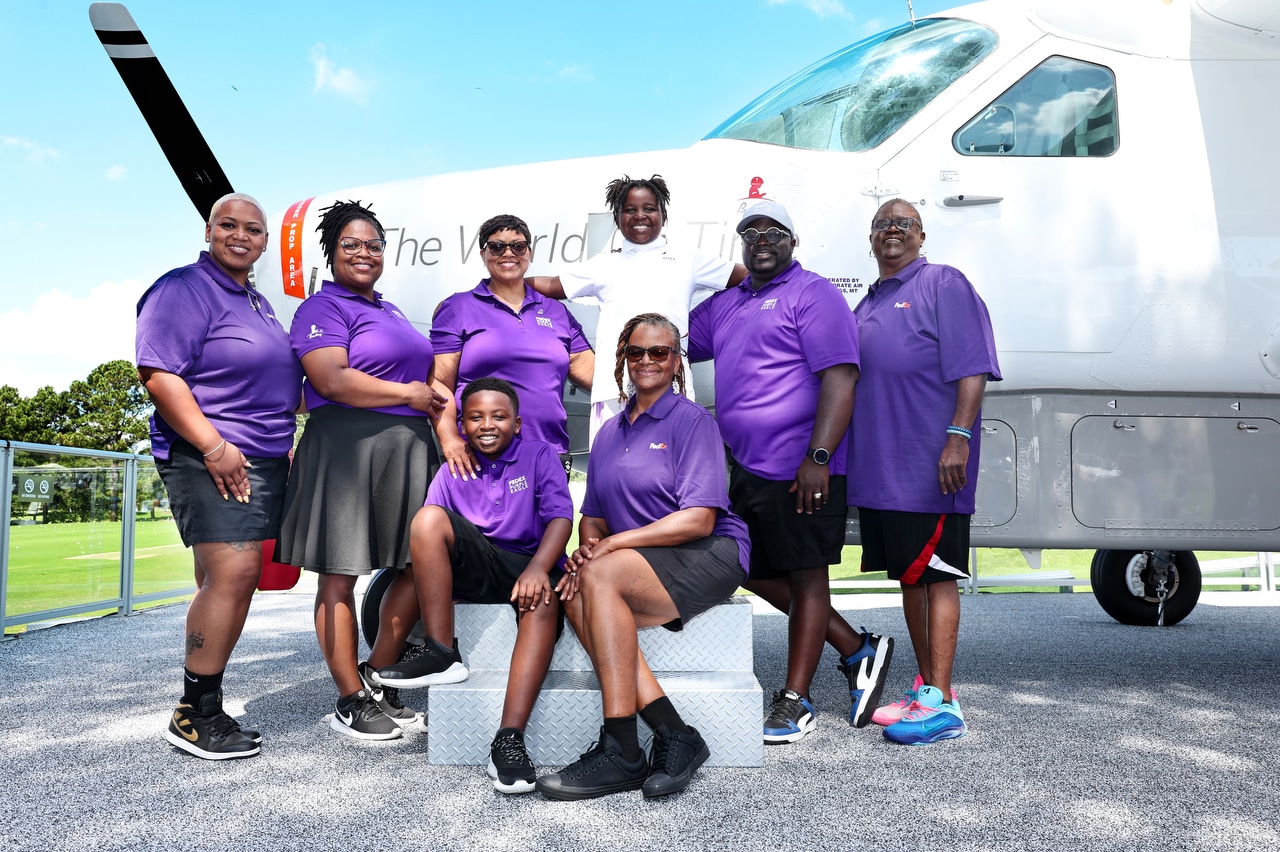
A Community of Care at St. Jude
St. Jude has long been at the forefront of sickle cell research and care. In fact, it was the first institution in the U.S. to cure a child with sickle cell disease through a bone marrow transplant, and today it houses one of the largest pediatric sickle cell programs in the country, caring for more than 900 children.
“Being there—everybody’s so nice, and they do a good job of making everything about her, making her comfortable. They bring carts around, give out toys, just all kinds of things to remind her why she’s there. And it works really well with them,” Tony tells BlackDoctor.org. “I’ve never had a dry moment or a bad interaction with anybody. It’s just phenomenal.”
That care has helped Bailey avoid many of the painful complications that so often come with the disease.
Bailey: A Superstar Who Runs the Show
Bailey takes her health seriously—and she does it with style. From drinking water to taking her meds, she’s ahead of the game.
“She’s a superstar—just to see her go through things that I don’t think I could. I’m very cautious when it comes to taking medicine. I’m scared of all that stuff—shots, everything,” Tony adds. “But she just takes it all in and does it.”
She even jokes she’s the best in her family at taking shots.
“She’s got it—she reminds me sometimes. We don’t have to remind her about anything, not even taking her meds. She remembers and actually does it on her own now,” Tony shares. “She’s just bubbly. She’s happy all the time, and it gives us hope. It lets us know everything’s okay, so we’re not worried about her. She basically runs the show—she calls the shots herself.”
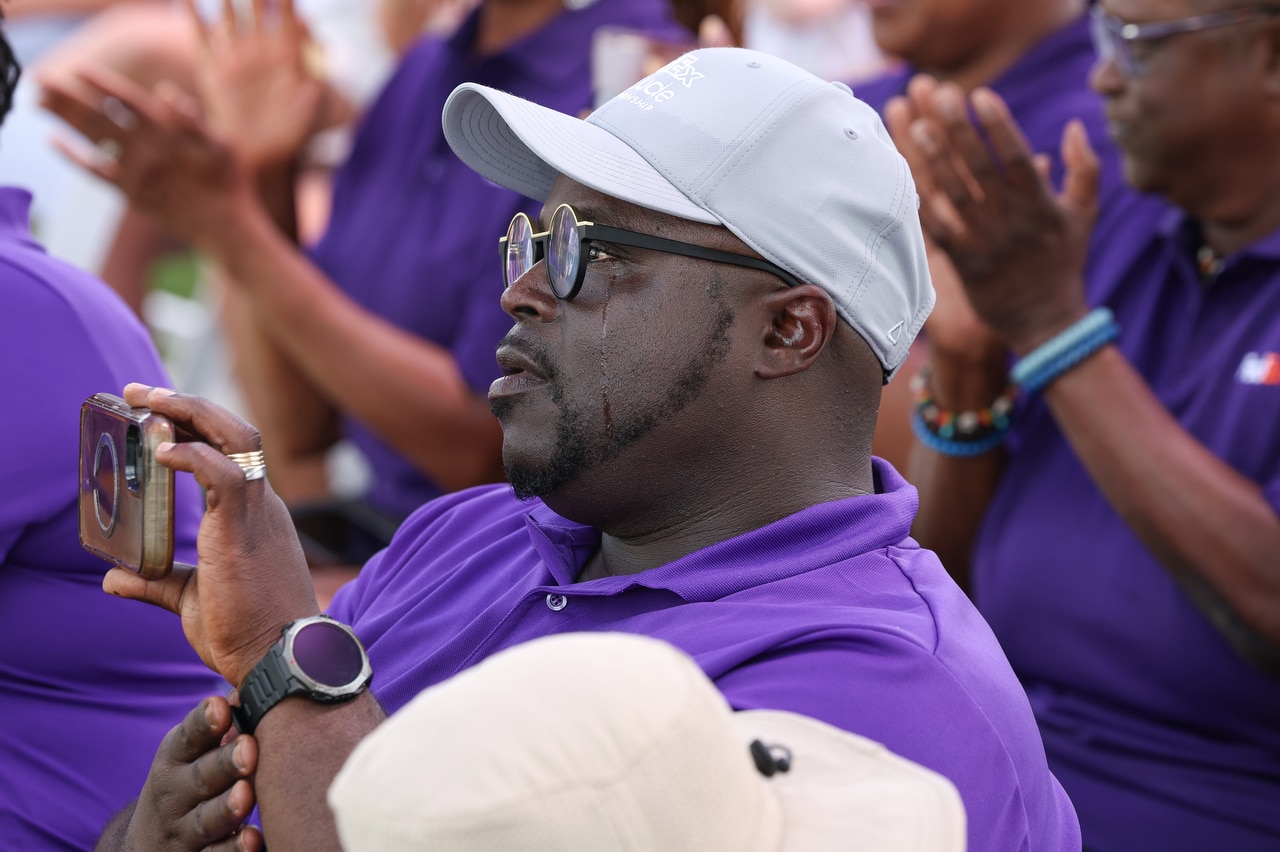
Hydroxyurea: Medicine That Works
Bailey takes hydroxyurea, a drug originally developed in the 1960s to treat cancer. St. Jude doctors were pioneers in adapting it for children with sickle cell disease. It works by increasing fetal hemoglobin, which helps prevent red blood cells from sickling, and reduces pain and other complications.
Thanks to hydroxyurea and the care she’s received, Bailey has never had a sickle cell crisis.
Her transition from liquid medication to pills was a milestone made fun by her care team.
“She graduated from the liquid form of hydroxyurea. The way they did that was really impressive…They gave her different small things to swallow, building her up to the real thing. They started with little stuff in her hand and gradually increased the size,” Tony explains. “Things like that — that’s what they do at St. Jude. It just shows you how they make everything fun. The kids don’t even realize what they’re doing early on.”
Beyond Medicine: Bailey’s Sparkling Spirit
Bailey is dynamic, creative, and fearless. She flips, cheers, goes to Cub Scouts, and paints her nails.
“We do competitions just for fun against the people,” she says with a grin. “I do handstands. I flip!”
Tony calls her the family superhero.
“She just takes it in stride. She’s a superstar,” he shares.
A FedEx Family Connection—and a Flying Legacy
Bailey’s Purple Eagle honor is about more than symbolism—it’s personal. Her nanna, Grenda, is a 19-year FedEx employee who works in corporate security and previously submitted Bailey for the Purple Eagle recognition.
This year, it finally happened.
Bailey’s bold purple butterfly design is now everywhere—on caddie vests, a custom golf cart, and even a FedEx feeder aircraft named in her honor. The plane, tail number N725FX, will carry Bailey’s name and the St. Jude logo for the remainder of its time in service.
“She just says, ‘I want to drive,’” Tony says, describing Bailey’s love for the custom golf cart. “And Ms. Barbara will hop in and take her for a ride. She basically runs the show.”
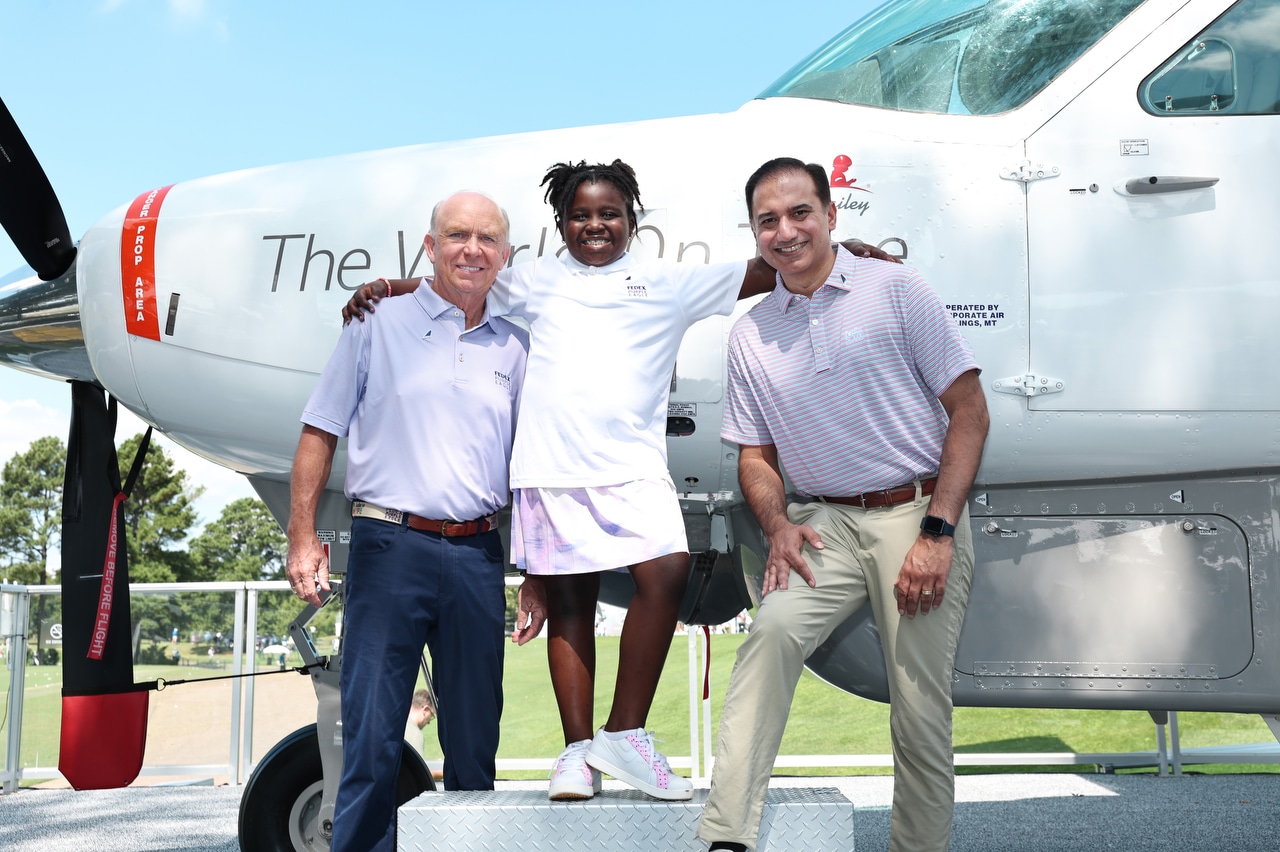
The Purple Eagle Program: A New Kind of Visibility
Bailey is the first sickle cell patient to be named a Purple Eagle—a program traditionally reserved for patients with cancer or other life-threatening illnesses whose family member works at FedEx.
The program, founded in 2012 by FedEx Vice President Bill West, honors one St. Jude patient each year by naming a plane in the FedEx feeder fleet after them.
“My biggest hope is that it opens people’s eyes to know that St. Jude does more than what people typically think. You usually think about cancer, but there are so many other childhood illnesses,” Tony says.
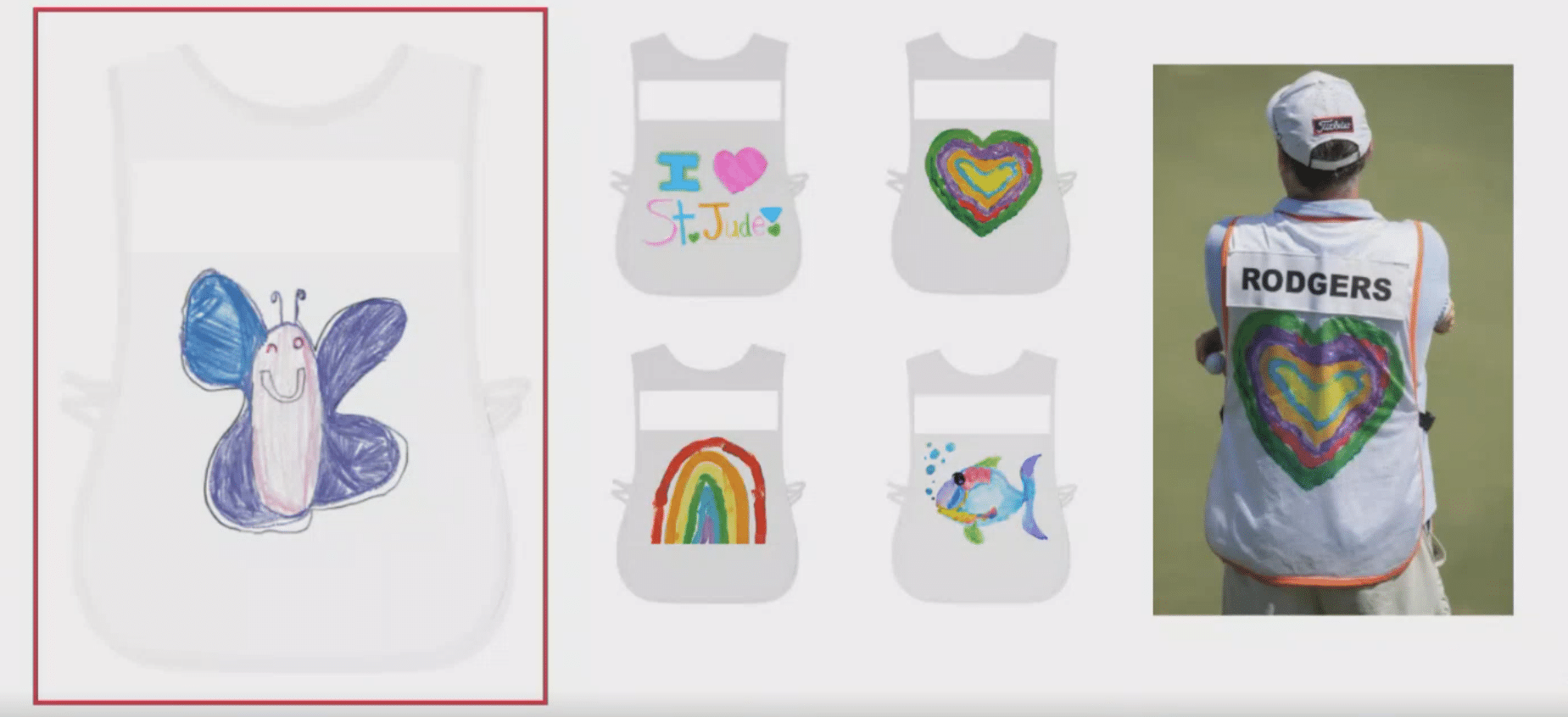
Advice for Other Families
Tony’s message to other families navigating a new diagnosis?
“Stay prayed up. Keep praying and have an open mind to really hear what the doctors are saying,” he says. “Take those lessons, apply them, and just know it’s going to get better. Don’t give up. Keep pushing the kids, and do everything you can to listen and follow the rules—big time.”
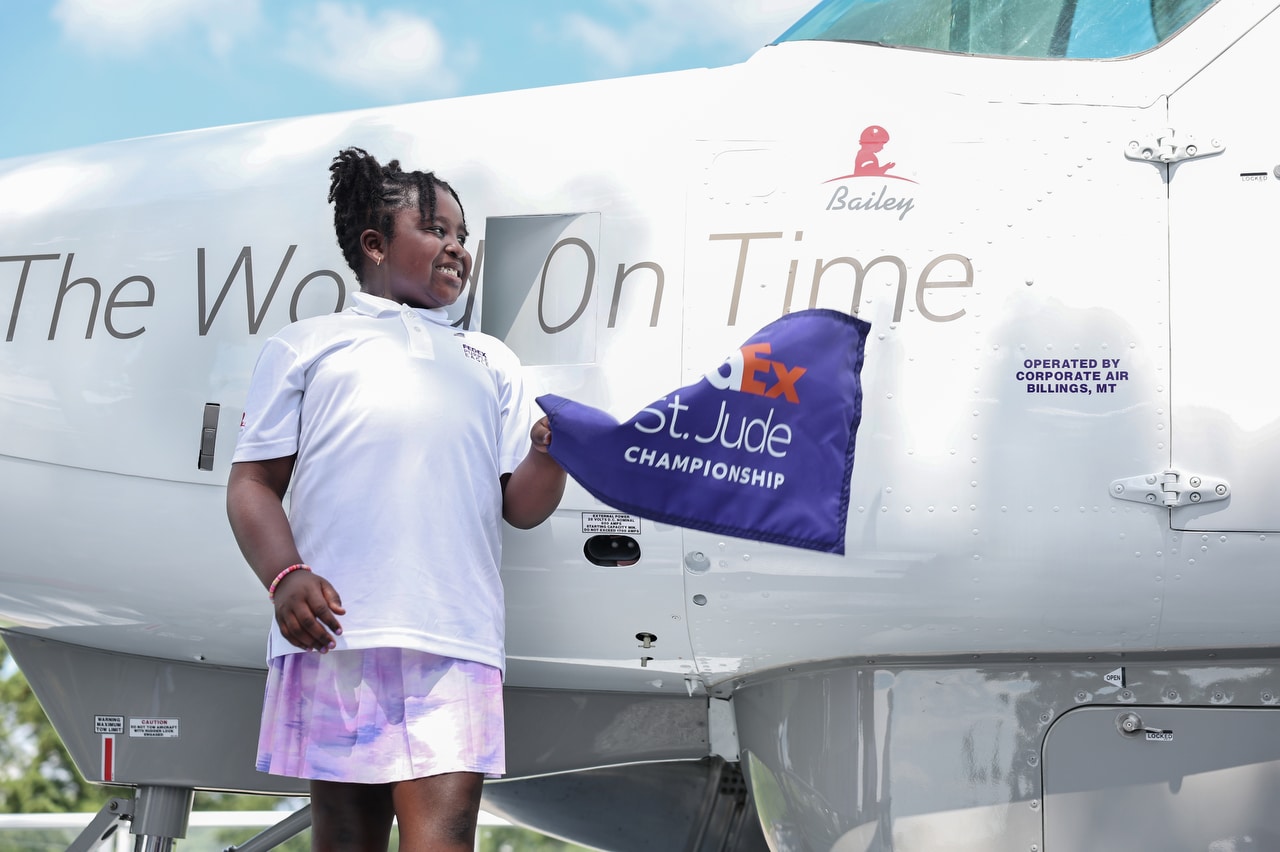
Bailey’s Story Is Just Beginning
Bailey isn’t just the first sickle cell honoree—she’s a living example of what’s possible. Her story broadens awareness, changes the narrative, and shines a light on a disease that affects thousands of children like her.
At the FedEx St. Jude Championship, surrounded by the world’s best golfers, Bailey isn’t swinging a club—but she’s already stolen the spotlight.
And she’s just getting started.



